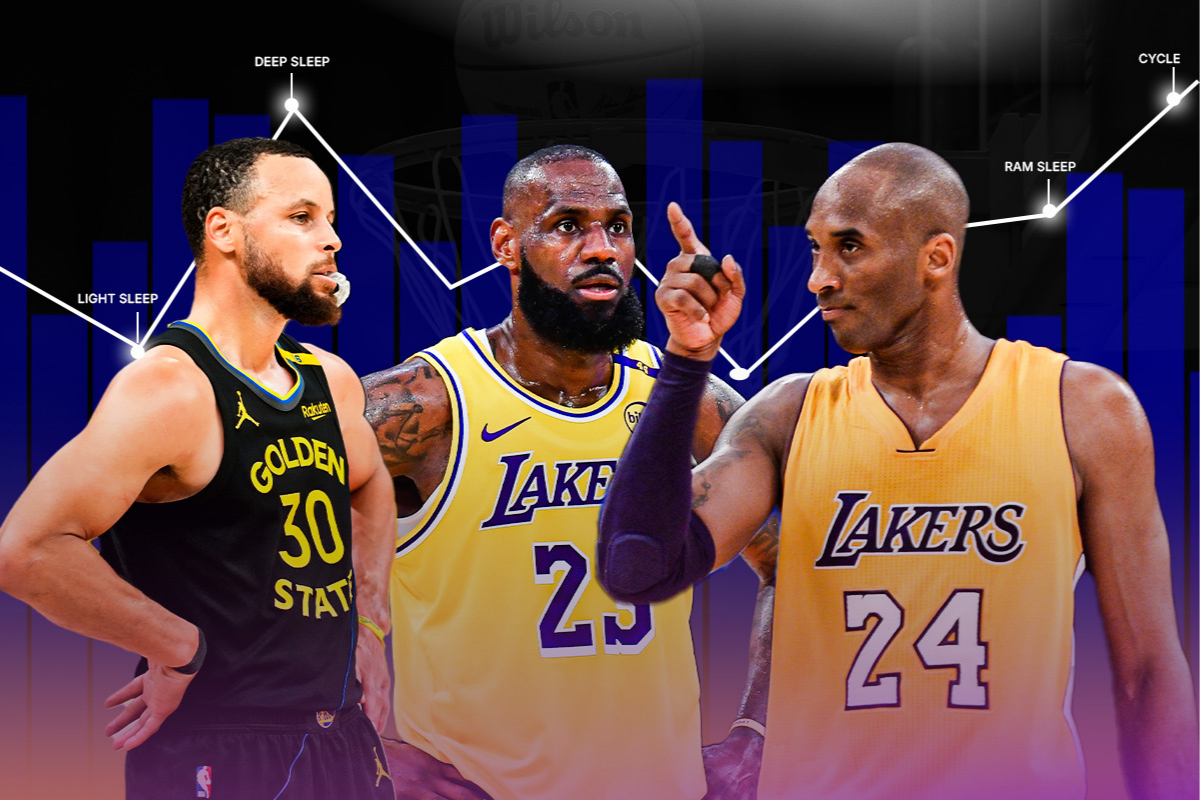
Imago
Edited | Original Image Credits: Imagn

Imago
Edited | Original Image Credits: Imagn
It was in 2017 that Adam Silver noticed a concerning issue across the NBA: relatively healthy players were benched. The reason was not injuries, not the coaches, not even strategies. It was worse. The players were tired. The cause was scarier – sleep deprivation. Mankind’s cultural preoccupation with sleep runs deep. Even with a poor sleep-resistant lifestyle, we already know how important it is. An unconscious fact of life as significant as breathing is projected to be a $950 million industry in 2032. That’s how hot a commodity it is. That’s why stories about athletes consistently hitting the gym before sunlight shock us. Some of us wonder how they do it, and others question if it can impact healthy athletes.
Watch What’s Trending Now!
Not everyone could be like Kobe Bryant, hitting the gym at 3 or 4 am and still be energetic at a game on the same day. It was obvious that sleep was crucial to basketball pros as much as to the regular workforce. It’s not necessarily a lifestyle issue. NBA players travel for road games, go right into workouts, play games, talk to the media almost immediately, do their personal ventures in between, rinse and repeat. With a $76 billion product and a potential for NBA expansion, sleep became crucial to the business. Indeed, the problem had become an “open secret” within the league. As one anonymous NBA general manager put it, “It’s the dirty little secret that everybody knows about.” Another simply called it a “very big issue,” a sentiment echoed across the league.
ADVERTISEMENT
The NBA and sleep — not a match made in heaven
We might think that playing one hour a night thrice a week is no big deal. Easy to forget that after we watch a game, have dinner, and prepare for bed, NBA players are still sweating while addressing the media. At least half of those players every night will hit a hotel room or hop on a plane for the next game. As former Portland Trail Blazers center Hassan Whiteside remarked, “it’s just so hard to get the sleep you need,” highlighting how it “could be the difference between you having a career game or playing terrible.” His then-teammate, guard CJ McCollum, emphasizes, “sleep is everything,” warning that “a lack of sleep messes up your recovery, messes up how you play, your cognitive function, your mindset, how you’re moving on the court.”
Fitting 82 games into six months entails a lot. NBA teams log about 40,000 air miles in a cycle while playing at least 3 games a week on a disturbed circadian rhythm. The exhaustion is most obvious during All-Star Weekend, draining it of energy and giving those who don’t make the cut happiness to get the rest. The effects became glaring. No longer was insomnia disguised as work ethic. Today, we see a frequency of muscle strains and weaker ACLs despite the expert medical and nutrition teams at their disposal. Staggering cognitive function and reaction times are higher in visiting teams in back-to-back games.
Top Stories
Did NBA Fine Derrick White and Grady Dick for Exchanging Jerseys? Fact Checking Viral News
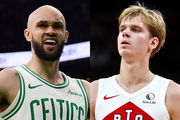
Steve Kerr Announces Decision on Warriors Future Amid Uncertain Contract Situation
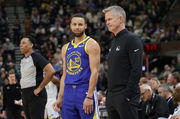
LeBron James Wants to Break NBA Tradition but Lakers’ $52.6M Contract Stands in the Way
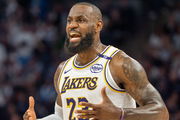
LeBron James Can’t Believe What He’s Witnessed After Wife Savannah’s Major Move
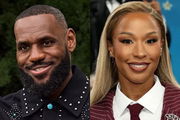
Sophie Cunningham Breaks Silence on WWE Star’s Challenge to Her Move Away From WNBA
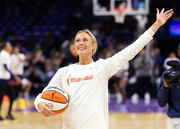
Over a decade ago, the result showed in a massive number of DNPs among otherwise healthy players. Even more alarmingly, the intense travel and sleep deprivation were linked to severe physiological consequences; as a 2019 ESPN article reported, Dr. Tim Royer, an athlete performance specialist who worked with the Magic, found one of his young players’ testosterone levels had “dropped to that of a 50-year-old man.”
ADVERTISEMENT
Dr. Eve Van Cauter PhD, the Frederick H. Rawson Professor in the Department of Medicine at the University of Chicago, where she directs the Sleep, Metabolism and Health Center (SMAHC), confirms these observations, stating that “sleep loss leads to a decline in physical performance, hand-eye coordination, and attention span, and increases one’s chance of injury.”
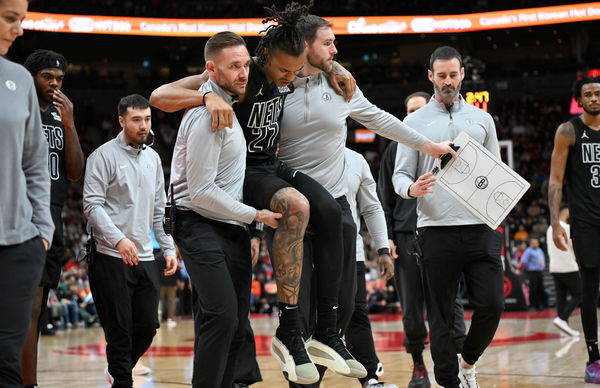
Imago
Jan 1, 2025; Toronto, Ontario, CAN; Brooklyn Nets forward Maxwell Lewis (27) is carried off the floor after suffering an injury against the Toronto Raptors in the second half at Scotiabank Arena. Mandatory Credit: Dan Hamilton-Imagn Images
The reality is that the NBA is not sleep-friendly. And it wants to fix that with a hefty investment.
ADVERTISEMENT
Evolution of sleep in the NBA—backed by science
Established research exists that directly connects basketball performance to sleep. Pioneering work by Dr. Cheri Mah, a sleep researcher and scientist who would later become a renowned consultant for NBA teams, provided quantifiable evidence. Her seminal 2011 study on adult male basketball players stands as a cornerstone in this understanding. In this groundbreaking study, conducted over five to seven weeks, Dr. Mah and her team extended the sleep duration of male basketball players, encouraging them to achieve nine to ten hours of sleep nightly. This wasn’t merely a suggestion; sleep was objectively measured using actigraphy, revealing players were indeed gaining over an hour and a half more sleep than before. The results were immediate and impactful:
ADVERTISEMENT
- Free Throw Percentage: a significant 9% improvement.
- Three-Point Shooting: also a 9% increase in accuracy.
- Reaction Time: a remarkable 12% faster response.
- Sprint Time: a 4% boost in speed over a standardized drill (from 16.2 to 15.5 seconds for a full-court sprint).
As Dr. Mah highlighted in a recent interview with Steven Bartlett about the study, “It wasn’t that 1% that I think many Elite athletes are trying to find… this was arguably 9% or even double digits for Reaction Time.” These dramatic improvements, even for already elite athletes, underscored sleep as a potent, untapped competitive advantage. She further elaborated on the magnitude in the podcast, The Diary of a CEO, stating, “getting 9% more free throws or three-point shots or 12% better reaction time is quite frankly for some teams the difference between like winning a championship and not.”
To be clear, load management is not the same as sleep science. Rest, as a science, has been a coaching technique throughout sports history. Decades ago, if some researchers are to be believed, coaches listed “tendonitis” or “flu-like symptoms” to give their players rest. They didn’t often get away with it.
ADVERTISEMENT
Shifting mindsets: from grit to reset
Silver’s predecessor, David Stern, fined the then-Lakers coach, Pat Riley, for benching Magic Johnson and James Worthy for a game. Yes, the same Pat “Heat Culture” Riley knows that proper sleep is as important as the intensive workouts. Without Magic and James, though, the Lakers lost 130-88, an absurd point difference in that era for the Purple & Gold, especially when Lakeshow was taking the league towards prime time viewing. In contrast, players like Michael Jordan and Kobe Bryant were detached from sleep.

USA Today via Reuters
Apr 24, 1998; Chicago, IL, USA; Chicago Bulls guard Michael Jordan (23) celebrates in the final minutes of a playoff game against the New Jersey Nets at the United Center. Mandatory Credit: Anne Ryan-USA TODAY
While Kobe sacrificed sleep for workouts, MJ would be seen at a poker table till the crack of dawn. Yet, the Black Mamba admitted in his later career that he went from 3-4 hours of sleep to at least 8 when he was closer to retirement. This echoes a common, yet problematic, “jock mentality” that often associates sleep with laziness or a lack of drive, something Tobias Harris predicted years back will change, stating, “I think in a couple years, [sleep deprivation] will be an issue that’s talked about, like the NFL with concussions.” Rest was irrelevant to the greats during their primes, but not to others.
ADVERTISEMENT
Pioneering personal protocols
Andre Iguodala admitted he had the bad habit of playing video games or binge-watching sitcoms for hours the night before a game. It leeched into his performance, and he knew he had to make changes. Iguodala would go to sleep therapists to find ways of incorporating a good night’s sleep into a regular season.
ADVERTISEMENT
Dr. Mah herself worked closely with Iggy, helping him “recraft” his approach to sleep, including a wind-down routine, nutritional choices, and strategic nap timing. The quantifiable impact on his performance was staggering, echoing the findings of her earlier research:
- Three-Point Percentage: A two-fold increase.
- Free Throw Shooting: An 8.9% (remarkably, the exact 9% seen in Dr. Mah’s initial study) improvement.
- Points Per Minute: A 29% improvement.
- Fouls: A 45% decrease.
Needless to say, Iggy himself has been very vocal about the benefits. In fact, Andre revealed that the hotels at road games were what scared him the most. “The beds were always too soft, and my back went out two times in the finals,” he shared. “It’s just something no one ever knew. And by the third and fourth time we played them in the finals, I started to get my own bed (in Cleveland). I shouldn’t say get my own bed, but I would Amazon a mattress and travel with my own pillow.”
ADVERTISEMENT

USA Today via Reuters
Dec 25, 2022; San Francisco, California, USA; Golden State Warriors forward Andre Iguodala (9) warms up before the game against the Memphis Grizzlies at Chase Center. Mandatory Credit: Darren Yamashita-USA TODAY Sports
In a documentary about athletes and sleep science, Iggy revealed the techniques he used to create his ideal sleep environment. That included compression socks and sleeves, a candle to have familiar scents around him. Iggy revealed that more sleep equated to fewer turnovers by him. More importantly, it translated into an extended career (10 years) and contributed to four championships with the Warriors. And for the wider NBA, rest became an enmeshment of neuroscience and technology.
Technology and tailored routines
Wearable tech and sleep labs combined with personalized protocols overturned the old jock mentality that sleep is less than. This year, the league brought in Somnee, a headband created by neuroscientists. The headband takes the science of a sleep lab and makes it wearable with EEG sensors that help users fall asleep faster, sleep longer, and improve their sleep quality.
In a six-month-long pilot study, NBA/WNBA players and coaching staff will test Somnee for further use. This is going to be significant as some NBA players, like Harris, are known to carry their own EEGs (electroencephalogram). Unsurprisingly, the Pistons forward has become a leading advocate for sleep and wellness, meticulously crafting routines. On non-game days, Harris aims to be in bed by 8:30 PM for 9+ hours of sleep. On game days, immediately after the final buzzer, he employs a breathing belt and heart-rate monitor, practicing a breathing routine to increase melatonin and suppress cortisol. His final step involves a 45-minute session with an EEG machine, utilizing neurofeedback to optimize brain waves for concentration.
Other stars are just as deliberate. LeBron James, known for his incredible longevity, averages 12 hours of sleep per day, calling it “the most important thing when it comes to recovery.” He meticulously controls his hotel room temperature (68-70 degrees), shuts off all electronic devices an hour before bed, and plays binaural beats of rain falling. Steph Curry prioritizes at least 8 hours and employs “desensitizing flotation baths” at the advice of former Warriors’ director of physical performance and sports medicine, Lachlan Penfold, to aid recovery and sleep quality.
Former Blazers teammates C.J. McCollum and Kent Bazemore avoid electronics, seek early bedtimes, and use blackout curtains. Even the veteran-laden Lakers team has strategically adapted, staying an extra night on road trips to mitigate the destructive impact of late-night flights on deep sleep. Paul George and Anthony Davis notably avoid sleeping on flights to preserve uninterrupted REM sleep.
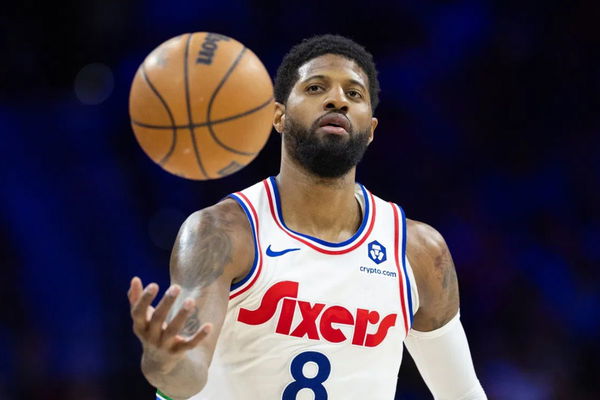
Imago
Mar 1, 2025; Philadelphia, Pennsylvania, USA; Philadelphia 76ers forward Paul George (8) catches a ball against the Golden State Warriors during the third quarter at Wells Fargo Center. Mandatory Credit: Bill Streicher-Imagn Images
Teams now have nap rooms and cryo chambers in practice facilities. Yet players maintain it’s impossible to get sleep on a travel-heavy NBA schedule. So the NBA has tried to improve schedules and rely on charter planes. This complex dance between travel and performance is further illuminated by Dr. Chris Winter, a neurologist and sleep medicine practitioner who conducted a 10-year study on MLB teams’ travel.
His “one day per time zone” rule highlights the body’s adjustment period: “If you flew from New York to L.A., you were three hours off, and then the next day you were two hours off. The next day you were one hour off. The next day you were acclimated to that time zone. Sure enough, the teams that were more off from that acclimation did worse if you were playing somebody who was acclimated.” This principle applies directly to the constant cross-country movement in the NBA, making “circadian alignment” a vital home-court advantage factor. It, however, takes one key player for everyone to follow.
Coaching for rest and recovery
When LeBron James revealed that sleep and creating an ideal environment for it are a big part of his self-maintenance, everyone took notice. When Doc Rivers was at the Celtics, he eliminated the morning shoot-around from the game-day routine to let players sleep in. Eventually, the Trail Blazers and Spurs followed, then more teams. Spurs shifted their practices to the afternoons. While Iggy went to a sleep therapist recommended by the team doctor, the Blazers got their own.
Crucially, experts like Dr. Winter emphasize that “winding down is important for sleeping,” particularly after the intense emotional and physical exertion of a game. “You win, or you get crushed in this dramatic fashion, you’ve got to go back to locker and do a few interviews, get cleaned up, got to eat, get to the hotel room and go right to sleep,” he notes. “That’s hard for a lot of people. They’ve gone from putting themselves under a lot of pressure at the free throw line to putting themselves in a lot of pressure in bed. So, to me it’s really about, hey, let’s make sure you’re doing the things that allow you to help kind of wind down and move towards sleep.”
NBA Rookie of the Year Victor Wembanyama exemplifies this, not answering his phone close to bedtime (even if it’s from his coach!) and always reading for an hour before sleep. No longer are players left to ‘figure it out’ on their own. The NBA now sees its best arsenal is not a jump shot or defense – it’s a well-rested mind and body. Dr. Meeta Singh MD, the former Chief of Sleep Medicine at Detroit’s Henry Ford Sleep Laboratory, succinctly states, “every aspect of athletic performance is affected by not getting enough sleep.”
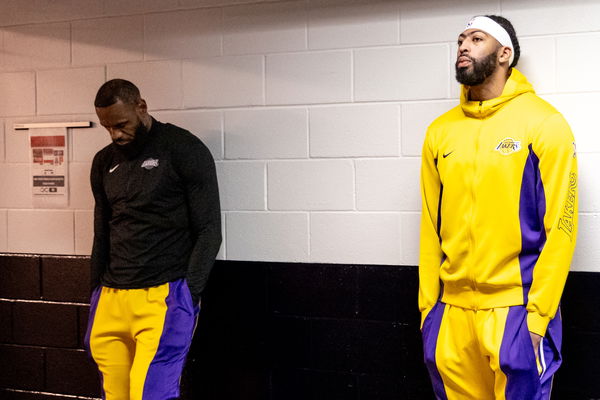
USA Today via Reuters
Apr 14, 2024; New Orleans, Louisiana, USA; Los Angeles Lakers forward LeBron James (23) and forward Anthony Davis (3) look on from the tunnel before the first half against the New Orleans Pelicans at Smoothie King Center. Mandatory Credit: Stephen Lew-USA TODAY Sports
This profound realization extends to the very approach of sleep itself, with Dr. Winter stressing that “good sleep takes training.” He advises coaches and players to be “proactive rather than reactive,” framing sleep much like any other skill: “It’s really about training people like you would train them to hit a curveball or train them to do a proper start to their swim start. It’s training them to be good sleepers.”
The war to get more sleep has been waged, with the NBA claiming that players’ wellness and health are a “major focus.” Yet, at the end of the day, this is the entertainment business, and players will be handed an entertainment schedule, not a sports schedule. Only time will tell if that disturbing reality will ever change.
ADVERTISEMENT
ADVERTISEMENT
ADVERTISEMENT

